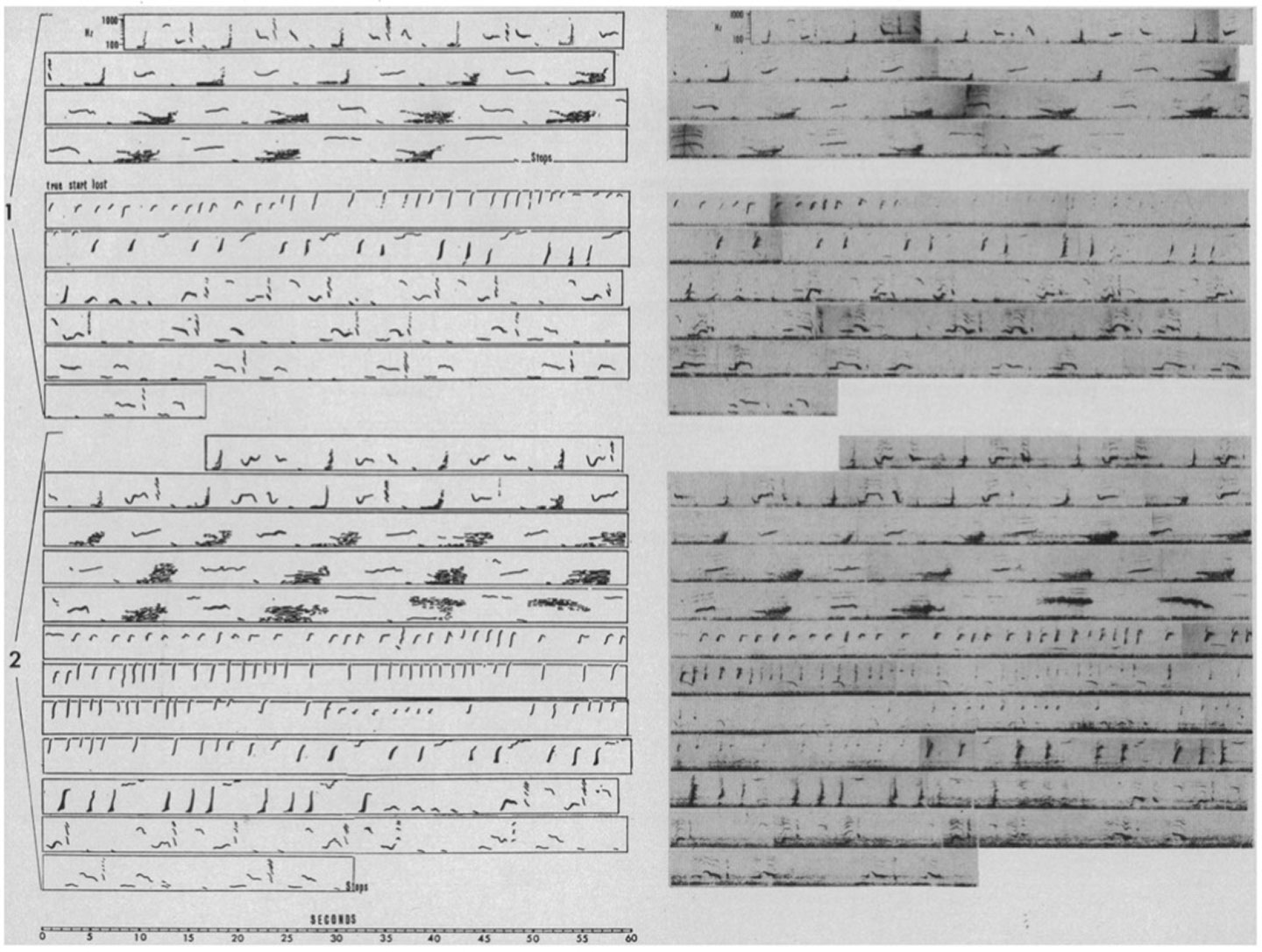This is the account David Rothenberg gives in his book Thousand Mile Song: Whale Music in a Sea of Sound (Rothenberg 2008).
“Voyager Golden Record 40th Anniversary Edition,” Discogs, 2017 →.
Margret Grebowicz, Whale Song (Bloomsbury, 2017), 3.
These details come from a 2020 email interview with Roger Payne by the author.
Joeri Bruyninckx, “Sound Sterile: Making Scientific Field Recordings in Ornithology,” in The Oxford Handbook of Sound Studies, ed. Trevor Pinch and Karin Bijsterveld (Oxford University Press, 2012), 127–50.
Payne, email interview by author.
Bruyninckx, “Sound Sterile.”
Stefan Helmreich, “An Anthropologist Underwater: Immersive Soundscapes, Submarine Cyborgs, and Transductive Ethnography,” American Ethnologist 34, no. 4 (2007), 631.
Helmreich, “An Anthropologist Underwater,” 632.
Payne, email interview by author.
Tim Lewis, “‘It Always Hits Me Hard’: How a Haunting Album Helped Save the Whales,” The Guardian, December 6, 2020 →.
Payne, email interview by author.
Payne, email interview by author.
Judith O. Becker, Deep Listeners: Music, Emotion, and Trancing (Indiana University Press, 2004), 72.
Melissa Block, “Programmer Finds Moon Landing’s Missing ‘A,’” NPR, October 2, 2006 →.
Lucier encouraged participants to “dive with whales, fly with certain nocturnal birds or bats (particularly the common bat of Europe and North America of the family Vespertilionidae), or seek the help of other experts in the art of echolocation.” See →.
A short video of the performance can be seen on YouTube →. More on Jackson’s work with whales, in his own words, can be found in Will E. Jackson, “Synthesizers of the Eco-Front,” Synapse 1, no. 6 (1977): 16–19. Many thanks to Ted Gordon for first introducing me to Jackson’s work.
Brandon LaBelle, Acoustic Territories: Sound Culture and Everyday Life (Continuum, 2010), 50.
Tara Rogers, “Synthesizing Sound: Metaphor in Audio-Technical Discourse and Synthesis History” (PhD diss., McGill University, 2011).
My gratitude to marine biologist David Gruber for introducing me to the work of Marie Poland Fish.
Gilles Deleuze and Félix Guattari, A Thousand Plateaus: Capitalism and Schizophrenia (University of Minnesota Press, 1987), 245. The notion of “becoming” is far too complex to describe in this text, but I have laid out a simplified example where becoming and metamorphosis is mapped onto the relationship between human and whale.
Cindi Katz, “Major/Minor: Theory, Nature, and Politics,” Annals of the Association of American Geographers 85, no. 1 (1995): 166.
Cindi Katz, “Towards Minor Theory,” Environment and Planning D: Society & Space 14, no. 4 (1996): 448.
Cindi Katz, “Revisiting Minor Theory,” Environment and Planning D: Society & Space 35, no. 4 (2017): 598.
Donna J. Haraway, When Species Meet (University of Minnesota Press, 2007).
Hildegard Westerkamp, “Linking Soundscape Composition and Acoustic Ecology,” Organised Sound 7, no. 1 (2002), 52.
Michel Foucault, The Order of Things: An Archaeology of the Human Sciences (Pantheon Books, 1972).
The scholarship of Sylvia Wynter has done much to discuss Western conceptions of “Man” that align racism and European colonialism, questioning whose life is prioritized and whose is systematically overlooked. For more, see Wynter, “Unsettling the Coloniality of Being/Power/Truth/Freedom: Towards the Human, After Man, Its Overrepresentation—An Argument,” CR: The New Centennial Review 3, no. 3 (2003). Benedicte Boisserron’s Afro-Dog: Blackness and the Animal Question has also carefully mapped how the history of the animal and the black experience in the circum-Atlantic is connected, rather than simply comparable.
Eduardo Viveiros de Castro, “Cosmological Deixis and Amerindian Perspectivism,” Journal of the Royal Anthropological Institute 4, no. 3 (1998).
